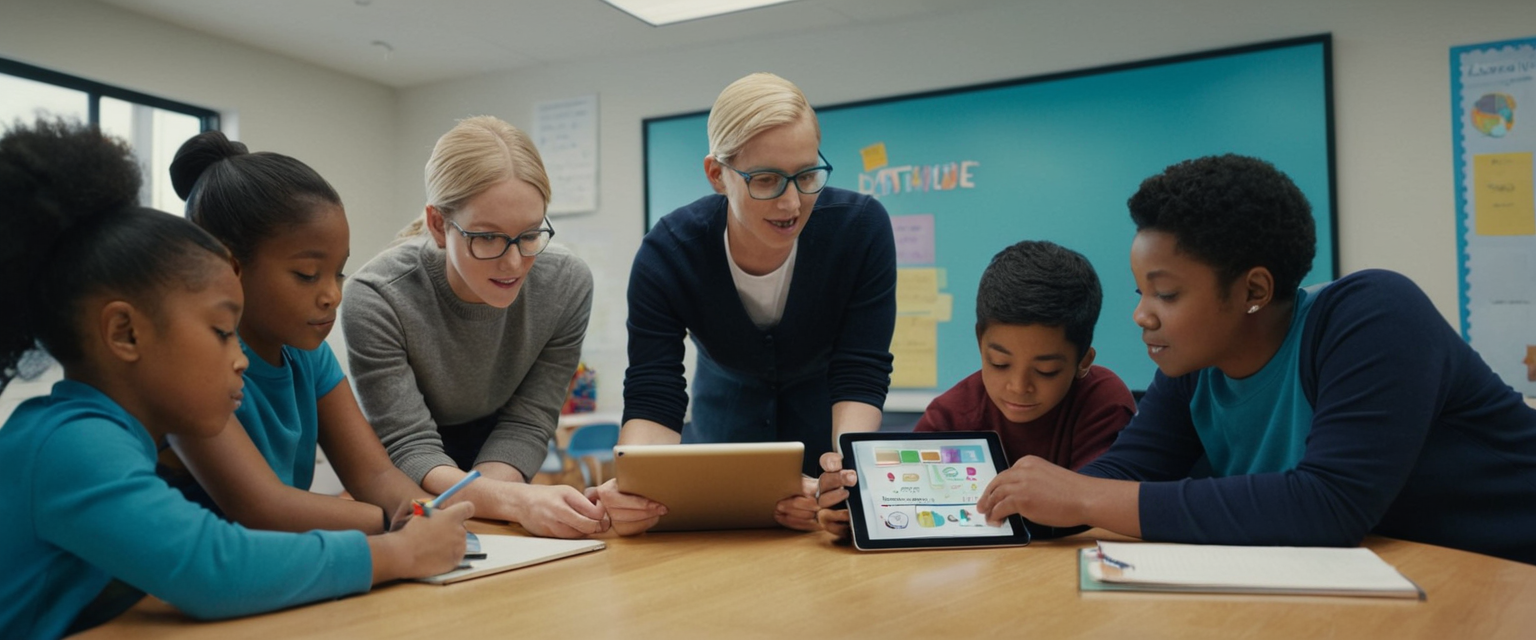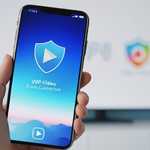
Content filtering for schools has evolved from a simple technical requirement into a sophisticated, multi-faceted system that serves as a cornerstone of educational cybersecurity and student safety infrastructure. Modern web filters now integrate artificial intelligence, mental health monitoring capabilities, and granular customization options that extend far beyond the basic blocking and tackling of inappropriate websites that characterized filtering technology in the early 2000s. Today’s educational institutions must navigate complex regulatory requirements, balance student access with protection, address sophisticated student bypass techniques, and integrate filtering with broader digital citizenship education—all while respecting student privacy and maintaining teacher autonomy. This comprehensive analysis examines the best practices, legal frameworks, technical implementations, and evolving landscape of content filtering in K-12 educational settings, providing practical guidance for administrators, IT professionals, and educators working to create safe, effective digital learning environments.
Legal and Regulatory Framework Governing School Content Filtering
The Children’s Internet Protection Act (CIPA), enacted in January 2001, represents the foundational legal requirement mandating internet content filtering in American schools and libraries. CIPA requires all computers in schools and libraries with internet access to be filtered, with sites blocked that are judged pornographic or inciting crime, violence, or intolerance—topics deemed inappropriate for juveniles. For schools seeking to qualify for federal E-Rate discounts on telecommunications and internet services, CIPA compliance is not optional but rather a mandatory prerequisite to receiving this substantial financial support. The specific requirements established by CIPA include adoption of an Internet safety policy, implementation of technology protection measures in the form of content filtering software, ongoing monitoring of students’ online activities, and educational instruction related to appropriate online behavior.
CIPA’s specific mandate focuses narrowly on blocking visual depictions that are obscene, constitute child pornography, or are deemed harmful to minors under applicable law. However, many schools implement filtering policies that significantly exceed these minimum requirements, creating what education experts characterize as over-filtering that extends far beyond CIPA’s actual mandate. The American Library Association’s research found that schools nationwide routinely filter internet content far more extensively than required by law, resulting in blocked access to legitimate educational resources that would ordinarily support curriculum objectives. This over-implementation reflects a pattern where IT administrators and educational leaders interpret CIPA conservatively or respond to community pressure rather than adhering strictly to the law’s narrow scope.
Beyond CIPA, schools must simultaneously comply with additional privacy-related legislation that profoundly impacts how filtering systems operate. The Family Educational Rights and Privacy Act (FERPA) requires schools to protect student educational records and data, establishing strict controls over who can access student information and how it can be used. The Children’s Online Privacy Protection Act (COPPA) specifically regulates the collection of personal information from children under thirteen by commercial websites and online services, applying directly to educational technology platforms that schools use. Many states have enacted additional privacy legislation addressing specific concerns such as data deletion, biometric data collection, breach notification, and regulation of third-party data use by educational technology companies. California’s Student Online Personal Information Protection Act (SOPIPA), now adopted as a model by more than twenty states, prevents online service providers from using student data for commercial purposes while permitting beneficial uses such as personalized learning and filtering functions.
The interaction between these various regulatory frameworks creates a complex compliance environment where schools must implement filtering that simultaneously addresses CIPA requirements while protecting student privacy under FERPA, COPPA, and state-specific statutes. Content filtering solutions employed by schools must achieve this balance by blocking inappropriate content as mandated, monitoring student activity for safety purposes, protecting collected data from unauthorized access or commercial exploitation, and maintaining transparency with students and parents about data collection practices. Schools receiving federal funding face particularly stringent requirements because non-compliance risks loss of E-Rate discounts, federal grants, and potential legal liability.
Evolution of Content Filtering Technology and Contemporary Approaches
The content filtering landscape has undergone remarkable transformation since the technology’s emergence in the early 2000s. Initial web filters functioned as relatively blunt instruments, categorizing entire websites as either permissible or prohibited based on domain-level analysis. These early systems typically blocked entire categories of websites indiscriminately—for example, blocking all video-sharing platforms to prevent YouTube access despite the platform’s substantial educational content. The technology could not distinguish between educational and non-educational content within broader website categories, resulting in routine false positives where legitimate educational resources were inaccessible due to miscategorization or blanket category restrictions.
Contemporary content filtering has advanced significantly through integration of artificial intelligence and machine learning capabilities that enable context-aware decision-making. Modern AI-powered filters can analyze the specific content within web pages rather than simply relying on domain-level blocking, allowing the system to differentiate between appropriate and inappropriate uses of the same website. For example, an AI-driven filter might permit a student to research sensitive topics for school projects while blocking inappropriate content on the same website, achieving a level of precision that would be impossible through traditional category-based blocking. This represents a fundamental shift from reactive blocking based on predefined categories to proactive assessment of actual content and context.
The distinction between web filtering and content filtering has become increasingly important as filtering technology has matured. Web filtering typically involves blocking access to specific websites or entire categories such as social media, video games, or pornographic content—essentially making binary decisions about whether domain access is permitted. Content filtering, by contrast, analyzes the actual content within web pages to identify inappropriate material even if the website itself might generally be considered educational. Schools requiring comprehensive protection now deploy both approaches in conjunction, recognizing that website-level blocking alone fails to address inappropriate content that might exist within otherwise legitimate websites. This dual approach requires more sophisticated infrastructure and management but provides substantially stronger protection against evolving online threats and inappropriate content sources.
Cloud-based filtering solutions have fundamentally altered how schools implement and maintain content filtering infrastructure. Unlike on-premises filtering appliances that required dedicated hardware, substantial upfront capital investment, ongoing maintenance responsibilities, and manual database updates, cloud-based solutions operate entirely in the cloud and automatically receive continuous updates reflecting new threats and emerging websites. Cloud-based systems are inherently scalable, functioning equally effectively whether devices access the internet on school networks, in homes during remote learning, or through bring-your-own-device (BYOD) programs where students use personal devices for education. These solutions often include easier authentication mechanisms, integration with existing school systems like Google Workspace and Microsoft 365, and reporting capabilities that provide detailed visibility into student internet usage patterns. For resource-constrained school IT departments, the elimination of hardware maintenance, firmware updates, and manual database management represents a substantial operational advantage that allows limited technical staff to focus on policy configuration and support rather than infrastructure maintenance.
Comprehensive Best Practices for Effective Implementation
Establishing Clear Policy Framework and Stakeholder Engagement
Implementing effective content filtering begins not with technology selection but with establishing clear organizational policies developed through collaborative processes involving diverse stakeholders. The American Library Association’s guidelines emphasize that determining what categories of content to filter represents fundamentally a law and policy decision that should be made by library and school administration and ultimately approved by governing boards—not solely by IT staff who may lack background in intellectual freedom principles. This distinction proves critical because IT professionals typically lack training in educational philosophy, intellectual freedom considerations, and age-appropriate learning progressions that should inform filtering policy decisions. Successful schools establish internet safety committees including IT staff, administrators, teachers, librarians, and sometimes parents to provide diverse perspectives on filtering policies and ensure decisions reflect educational values rather than purely technical considerations.
Policy development should explicitly address multiple dimensions of internet safety beyond simple content blocking. CIPA requirements mandate that school internet safety policies address access by minors to inappropriate material online, safety and security of minors during electronic communications including email and chat rooms, prevention of unauthorized access and unlawful activities, and protection of personal information. Schools must develop written policies documenting these protections, communicate policies transparently to students, parents, and staff, and establish procedures for implementing policies consistently across all internet-connected devices. Documentation of policy decisions and their rationale provides important compliance evidence and ensures consistency even as administrative personnel change.
Effective policies also establish clear procedures for handling requests to block or unblock content, addressing the inevitability that filtering systems will occasionally block legitimate educational resources or fail to block inappropriate material. Many schools implement tiered procedures where teachers can request temporary overrides for specific lesson activities, permanent unblocking for resources incorrectly categorized, or exceptions for particular student needs. These procedures should be accessible without creating excessive administrative burden or serving as a barrier that discourages legitimate override requests—a phenomenon researchers call the “chilling effect”. Documentation of override requests and decisions provides valuable data for policy refinement, revealing categories that may be excessively restrictive and requiring adjustment to better support educational objectives.
Balancing Protection with Educational Access and Digital Literacy Development
Perhaps the most persistent challenge in school content filtering involves striking appropriate balance between protecting students from genuinely harmful content and providing access to educational resources necessary for learning. Research by the American Library Association found that systematic over-filtering blocks access to legitimate educational resources including information required for Advanced Placement curricula, suppresses development of critical digital literacy skills, and disproportionately harms economically disadvantaged students most dependent on school-provided internet access. When students cannot access necessary educational resources during school, their learning opportunities diminish while their frustration with filtering systems increases. Simultaneously, overly restrictive policies may inadvertently suppress access to health and social information that older students need for personal development and informed decision-decision-making.
Grade-level appropriate filtering represents a best practice increasingly adopted by schools seeking to balance these competing considerations. Rather than applying identical filtering policies to all students regardless of age, schools implementing tiered approaches apply more restrictive filters to elementary students while gradually expanding access as students mature and develop stronger digital literacy skills. A second-grade student might have access to a tightly curated set of vetted educational websites, while a high school student researching contemporary social issues might have access to a much broader range of resources reflecting their increased maturity and research needs. This developmental approach acknowledges that digital citizenship and online safety judgment develop progressively through childhood and adolescence, requiring greater adult protection for younger children while gradually increasing student autonomy and decision-making authority. Many filtering solutions support this approach through granular controls enabling administrators to apply unique filtering policies based on grade level, student age, subject matter, class context, and time period.
Accompanying technical filtering with explicit digital citizenship education represents an equally important best practice for developing students’ capacity to make responsible online decisions. Technical filtering can control what content appears on school networks but cannot teach students to make wise choices in unfiltered environments such as personal devices, college networks, or post-graduation employment settings. Forward-thinking schools implement comprehensive digital citizenship curricula addressing real-world challenges students encounter including cyberbullying, online drama, managing digital reputation, identifying misinformation, and responding to online threats. This educational component proves especially important for older students who will soon navigate entirely unfiltered internet environments where technical protections no longer apply. By gradually reducing filtering restrictions for high school students while simultaneously providing strong digital literacy education, schools better prepare students for responsible adult internet use than approaches relying exclusively on technical controls.

Customization Strategies for Diverse Learning Contexts
Effective implementation requires recognizing that schools serve highly diverse populations with varying legitimate internet needs based on age, grade level, subject matter, and context. Administrators should have the ability to create granular policies tailored to these different circumstances. Some schools implement subject-specific exceptions where biology students can access websites with reproductive health information normally blocked in general internet access, or history students researching controversial topics can access content otherwise restricted. Time-based policies represent another customization approach where certain websites remain blocked during instructional periods but allow access during study halls or designated research periods. Individual student exceptions might allow an advanced student engaged in college-level research to access content normally restricted from peers.
The proliferation of bring-your-own-device (BYOD) programs and hybrid learning models has necessitated filtering approaches that function across diverse device types, operating systems, and network locations. Cloud-based filtering solutions address this requirement more effectively than on-premises appliances by operating independently of network location or device ownership. Whether a student accesses the internet on a school-provided Chromebook at school, a personal iPad at home, or a Windows computer at a library, consistent filtering policies apply through cloud-based solutions. This consistency proves important for ensuring CIPA compliance and maintaining safety policies regardless of device or location.
Staff and administrative user groups require different filtering policies reflecting their legitimate professional needs. Teachers require broader access than students to research materials, prepare lessons, locate educational resources, and access professional development content. Administrators and school resource officers may need access to websites otherwise blocked to perform their responsibilities. Some schools implement staff override capabilities or alternative accounts with less restrictive filtering for approved professional purposes. However, these exceptions should be carefully managed to prevent inappropriate access while accommodating legitimate professional needs.
Addressing Technological Bypass Techniques and Student Workarounds
Students have demonstrated remarkable ingenuity in circumventing school content filters, employing techniques that evolve faster than filtering technology can adapt. Understanding common bypass methods enables schools to implement technical and policy responses that maintain filtering effectiveness despite student countermeasures. The most prevalent bypass technique involves virtual private networks (VPNs), which create encrypted tunnels that mask a student’s true destination and prevent content inspection by routing traffic through external servers. When a student connects through a VPN, the school network cannot see which websites they access—only that they are connected to some external server. Proxy websites represent a related technique where students access websites through intermediary servers, making it appear that they are visiting the proxy rather than the blocked destination. Proxy websites proliferate rapidly, with new ones constantly created to replace blocked alternatives, making it nearly impossible for IT staff to maintain comprehensive blocklists.
More sophisticated students employ DNS manipulation by accessing websites using IP addresses instead of domain names, since traditional URL-based filters may not block IP-based access. Browser extensions and alternative browsers accessed through USB drives provide additional bypass mechanisms, allowing students to operate unfiltered Firefox browsers run directly from portable media without requiring installation. Some students employ stolen passwords from teachers or administrators to access unfiltered accounts. Finally, students have figured out how to modify network proxy settings on individual devices, changing filtering configurations to allow previously blocked content.
Modern content filtering solutions increasingly address bypass techniques through multiple complementary strategies rather than relying on simple domain-level blocking. Advanced filtering solutions employ device-level filtering that inspects encrypted traffic at the browser level before encryption occurs, making them more resistant to VPN and proxy circumvention. This represents a significant technical advancement because it analyzes content in its unencrypted state just before presentation to the user, operating outside the encryption that students employ for bypass. In-browser filtering techniques operate protocol-agnostic, unaffected by Encrypted Client Hello (ECH), DNS-over-HTTPS (DoH), and other encryption standards that students might employ. Additionally, modern solutions provide comprehensive monitoring and reporting of bypass attempts, enabling IT staff to identify when students attempt to use VPNs or proxy services and investigate concerning patterns.
One innovative approach to filter bypass involves transparency rather than purely technical blocking. The Markup investigation into school filtering revealed that a 17-year-old student named Aahil Valliani designed Safe Kids, a filter specifically built to reduce over-blocking while addressing bypass concerns through better user communication. Rather than silently blocking access, Safe Kids shows students why content is blocked with explanatory pop-ups and links to additional information about why restrictions exist. The system stores only website categories rather than URLs and search terms, protecting student privacy while maintaining protection. Electronic Frontier Foundation researchers examining Safe Kids commended its focus on privacy, transparency, and context-specific blocking, describing it as an improved option compared to traditional school filters. This approach demonstrates that student frustration with filtering sometimes stems from lack of transparency and understanding rather than fundamental disagreement with safety principles.
Mental Health Monitoring and Student Safety Integration
Contemporary content filtering has expanded beyond blocking inappropriate content to integrate sophisticated mental health monitoring and early warning systems that detect signs of student distress. This integration reflects growing recognition that many students engage in concerning online searches related to self-harm, suicide, bullying, or violence before taking concerning action, creating potential intervention opportunities. Advanced filtering solutions now detect patterns in online searches and behavior that may indicate concerning topics such as bullying, self-harm, suicide, substance abuse, or violence, alerting school counselors or administrators to enable timely intervention. Machine learning algorithms analyze combinations of search terms, websites accessed, and duration of engagement to identify students potentially experiencing mental health crises.
Securly Aware, an AI-powered wellness monitoring tool integrated with web filtering, analyzes students’ online activities across social media, email, documents, conversational AI, and web browsing to detect signs of distress and assign wellness levels in real-time. The system combines automated AI analysis with human expert review, providing life-saving alerts when concerning patterns emerge. School districts report that alerts from such systems have enabled interventions that prevented student suicides, with alerts sometimes arriving after normal school hours when administrative availability might otherwise prevent response. GoGuardian’s Beacon program similarly provides alerts when it detects activity suggesting a student may be considering self-harm or suicide. These capabilities enable the earlier identification of at-risk students than would occur through traditional observation or teacher awareness alone.
However, integration of mental health monitoring into filtering systems raises complex implementation challenges and ethical considerations. Schools must establish clear policies and procedures determining how alerts are processed, who receives notifications, what training personnel receive for responding to mental health alerts, and how information is handled to protect student privacy while enabling appropriate intervention. Some districts have been slow to adopt mental health monitoring capabilities due to liability concerns and uncertainty about responsibility for acting on alerts, particularly those arriving outside school hours. Progressive districts partner with local emergency services to establish clear protocols for alerts arriving after school hours or weekends, ensuring that trained responders can conduct appropriate wellness checks. Additionally, research on school-based surveillance identifies risks that algorithmic bias in AI-based monitoring might disproportionately flag marginalized students—including Black students, LGBTQ+ youth, and students with disabilities—leading to unwarranted intervention or discipline.
Network administrators must recognize that they are not trained mental health professionals and should not bear sole responsibility for student mental health crisis response. Best practices involve routing alerts to appropriate personnel—school counselors, psychologists, social workers, or trained safety coordinators—who can properly assess situations and coordinate appropriate interventions. Additionally, schools should ensure that concerning online activity triggers supportive rather than purely punitive responses, recognizing that many students experiencing mental health crises need support and treatment rather than discipline. This requires training for all staff regarding trauma-informed responses to student distress.
Privacy Protections and Data Governance Considerations
As content filtering systems capture increasingly detailed information about student online behavior, protection of collected data emerges as a critical concern for schools managing sensitive student information. By default, most filters generate extensive logs of user activity data documenting every website attempted, every search performed, and every blocked access. This creates substantial privacy risk if logs are not properly protected, as they contain deeply personal information about student interests, research, communications, and behavior patterns. The American Library Association’s guidelines specifically recommend that schools configure devices to log the minimum amount of data necessary and develop procedures to regularly delete logfiles, restricting access to collected data to authorized staff with legitimate educational purposes.
Schools must decide whether to enable SSL/HTTPS decryption capabilities in their filtering systems, a choice with significant privacy implications. SSL decryption allows filtering systems to inspect encrypted communications by intercepting the encrypted session, decrypting it for content analysis, and then re-encrypting it before transmission—essentially conducting a “man-in-the-middle” inspection. Without SSL decryption capability, filters can only block entire encrypted domains without seeing the specific content within those domains. However, enabling SSL decryption means the school is essentially monitoring all encrypted communications, potentially including access to banking websites, medical portals, personal email, and other highly sensitive communications. The American Library Association strongly recommends against enabling SSL decryption on library or school computers, viewing the privacy impacts as potentially catastrophic. Schools choosing to enable SSL decryption should carefully consider privacy implications and implement strict access controls limiting who can review decrypted content.
Data governance policies must address how long schools retain filtering logs, who can access collected data, and how data is protected from unauthorized access or commercial exploitation. Schools receiving federal funding face specific requirements under FERPA to protect student educational records, which may include internet filtering logs maintained by school districts. Some filtering vendors store data in ways that could potentially be accessed for purposes beyond student safety—including marketing analysis, aggregate trend analysis, or commercial use—unless schools explicitly prohibit such uses in contracts. California’s SOPIPA and similar state laws require that online service providers not use student data for commercial purposes. Schools should carefully review contracts with filtering vendors to ensure that collected data is used only for legitimate school purposes, protected from unauthorized access, deleted on appropriate timelines, and never disclosed to third parties without consent.
School surveillance research reveals that different students experience different levels of monitoring intensity based on device ownership patterns, with students relying exclusively on school-provided devices subject to heavier surveillance than students with personal devices they can use for some activities. This creates equity concerns where lower-income students dependent on school technology receive more intense monitoring than higher-income peers. Additionally, algorithmic bias research indicates that AI-based monitoring systems may disproportionately flag Black students, LGBTQ+ youth, and students with disabilities for concerning behavior, perpetuating historical patterns of discriminatory discipline. Schools employing AI-based monitoring should conduct bias audits, implement fairness metrics and adversarial testing to identify bias, and ensure that algorithmic decisions are subject to human review rather than automated implementation.
Cloud-Based Solutions and Infrastructure Considerations
The shift from on-premises filtering appliances to cloud-based solutions represents one of the most significant infrastructure decisions schools make regarding content filtering. Cloud-based filtering offers numerous advantages over traditional appliance-based approaches, particularly for schools supporting hybrid and remote learning models. Because cloud-based filters operate independently of network location, they provide consistent protection whether students access the internet on school networks, at home, or in third-party locations. This proves critical for equity because it ensures that all students receive consistent safety protections regardless of where learning occurs, while traditional appliances only filter on-campus traffic. Cloud-based solutions also scale infinitely to accommodate growth in student population, device count, and bandwidth demands without requiring hardware upgrades or replacement.
From a management perspective, cloud-based solutions substantially reduce the technical burden on school IT staff who no longer must maintain hardware, install firmware updates, or manually refresh blocked website databases. Updates to filtering rules and threat definitions occur automatically through cloud updates, ensuring that protections against emerging threats deploy without requiring local administrative action. Many cloud solutions support single sign-on with existing school authentication systems including Google Workspace and Microsoft 365 accounts, enabling automatic policy application based on student identity and grade level without requiring separate authentication. Rich reporting capabilities provide visibility into student internet activity patterns, policy violations, and emerging trends that inform policy adjustments.
However, cloud-based solutions require stable internet connectivity and create dependency on service availability—if the cloud service experiences outages, filtering protection may be unavailable. Schools should evaluate vendor reliability, reviewing uptime guarantees, disaster recovery procedures, and support responsiveness before committing to specific solutions. Additionally, cloud-based approaches require sending student device information and activity data through internet connections to vendor servers, necessitating careful attention to data security and privacy. Schools should confirm that vendors implement encryption for data in transit, follow industry security standards, and maintain appropriate certifications for educational data handling.

Effective Technical Configuration and Policy Management
Successful technical implementation requires careful configuration that reflects school-specific educational objectives rather than relying on vendor default settings. Many filtering solutions provide dozens or even hundreds of content categories that schools can block, allow, or apply conditionally. Rather than enabling blocking for all potentially problematic categories, schools should thoughtfully select categories aligned with their educational philosophy and age-appropriate protection objectives. Some categories present gray areas where educational value conflicts with potential concerns—category decisions require careful consideration of how the category affects curriculum support. For example, blocking all websites containing content about reproduction might protect younger students from inappropriate material but prevent access to legitimate health and science education resources.
Policy configuration should specify how different user groups experience different filtering levels. Staff accounts should have appropriately broader access than student accounts, reflecting their need to research materials, prepare lessons, and access professional development resources. Administrative staff and school resource officers require specialized exceptions supporting their distinct professional responsibilities. These differentiated policies should be applied systematically rather than granted on ad-hoc individual bases that create management complexity and potential inconsistency. Many modern solutions support automatic application of policies based on directory service information (grade level, user role, organizational unit) rather than requiring manual assignment.
Configuration should include clear procedures and workflows for override requests when filtering blocks legitimate educational resources. Some schools implement teacher-initiated temporary overrides allowing educators to request access to specific content for defined time periods supporting particular lessons. Others require students to submit formal override requests explaining the educational purpose, with instructional staff reviewing requests and approving or denying based on educational merit. While such procedures create some administrative overhead, they ensure that overrides serve legitimate educational purposes rather than becoming workarounds for circumventing legitimate filtering policies. Documentation of override decisions provides valuable data for identifying categories that may be excessively restrictive and require adjustment.
Technical configuration should also address specific technical challenges emerging from filter sophistication. Many schools incorrectly implement DNS filtering that blocks domain names at the DNS level before requests reach the filter, preventing granular page-level blocking even within sites schools intend to allow with restrictions. Proper implementation of SSL/HTTPS decryption (when chosen despite privacy concerns) requires careful technical configuration to avoid performance degradation or certificate errors that disrupt legitimate browsing. Configuration for BYOD environments requires careful attention to ensure that filtering applies even when students use personal devices with personal authentication credentials.
Handling Student Frustration and Transparency Measures
Student frustration with school content filters has become increasingly visible in research and media attention, with investigations documenting instances where filters block access to important educational resources, suicide prevention organizations, and legitimate information resources. One investigation by The Markup found that Planned Parenthood’s website was blocked in numerous schools, along with The Trevor Project (LGBTQ+ support services), NASA resources, and many legitimate educational sites. While some blocking occurred due to miscategorization that could be corrected through override requests, the systematic inaccessibility of important resources contributed to student frustration with filtering systems.
This frustration sometimes motivates students to circumvent filters through technical means, but it also reflects legitimate concerns about over-filtering that restricts educational opportunities. A constructive response involves implementing transparency measures where students understand why content is blocked and what options exist for accessing legitimately needed resources. Safe Kids, the student-designed filtering system, exemplifies this approach through explanatory pop-ups informing students when content is blocked and why, rather than providing only access denial. This transparency approach treats students more as participants in internet safety rather than adversaries to be defeated through technical means.
Schools can implement relatively simple transparency measures including clear communication about filtering policies, explanations of why particular categories are blocked, and accessible procedures for override requests without excessive barriers. When teachers understand that legitimate educational resources are being blocked, they can submit override requests or suggest policy adjustments. Rather than interpreting filter blocks as purely oppositional resistance from students, schools might view them as indicators that filtering policies require adjustment to better serve educational objectives.
Best Practices for Vendor Evaluation and Solution Selection
Selecting appropriate content filtering solutions from the expanding vendor marketplace requires systematic evaluation against specific school requirements. Schools should begin by defining clear requirements reflecting their specific context, including device types to be supported, geographic distribution of students (on-campus only versus remote and hybrid learning), budget constraints, integration requirements with existing school systems, and desired customization capabilities. Once requirements are defined, schools should develop evaluation criteria and systematically compare vendors against these criteria rather than relying on product marketing claims alone.
Key evaluation criteria should address whether solutions are designed specifically for K-12 education rather than adapted from corporate or consumer products. K-12-specific solutions typically understand educational workflows, administrative structures, and compliance requirements better than general-purpose products. Schools should evaluate the comprehensiveness of category databases, currency of website classification, and ability to customize categories for school-specific needs. Performance characteristics including response times, false positive rates (appropriate content being blocked), and support for concurrent users matter substantially for system effectiveness.
Customization and flexibility represent critical evaluation dimensions, including ability to apply different policies to different user groups, support for temporary and permanent override procedures, granular controls enabling page-level blocking within sites schools want to allow with restrictions, and scheduling capabilities enabling time-based or context-based policy differences. Privacy and security features should receive careful evaluation including how student data is collected, retained, protected, and whether it can be sold or used for purposes beyond school operations. Integration capabilities with existing school systems including authentication directories (Google, Azure, Active Directory), identity management platforms, and learning management systems affect implementation complexity and ongoing management overhead.
Vendor support and community resources prove important, particularly for resource-constrained schools lacking extensive IT expertise. Schools should evaluate vendor responsiveness to support inquiries, availability of documentation and training resources, and participation in user communities where schools can learn from others’ experiences. Many vendors provide best practice guides, category recommendations for educational environments, and compliance checklists that help schools optimize implementations. Reviews from similar educational institutions provide more reliable indicators of real-world performance than vendor marketing claims.
Emerging Trends and Future Directions in School Content Filtering
The landscape of school content filtering continues evolving rapidly as technology advances, new threats emerge, and educational practices adapt to changing circumstances. Artificial intelligence and machine learning increasingly form the foundation of advanced filtering solutions, enabling more sophisticated analysis of content that distinguishes between legitimate educational uses and genuinely inappropriate material. Rather than relying on static databases of blocked websites, AI systems analyze content contextually and dynamically, adapting to new threats and websites as they emerge. This represents significant advancement over traditional filters that struggle when facing millions of new websites created daily.
Real-time threat detection and prevention capabilities represent another emerging trend, where filters proactively identify phishing attempts, malware distribution, and evolving cyber threats rather than simply relying on blocklists. Machine learning systems analyze traffic patterns and identify anomalies suggesting cyberattacks, potentially stopping attacks before they impact students or staff. Integration of filtering systems with broader cybersecurity stacks enables coordinated response to emerging threats across multiple security layers.
Mental health monitoring integration will likely expand substantially as schools recognize potential to identify at-risk students through online behavioral signals. However, this expansion should be accompanied by stronger governance, training, and ethical frameworks ensuring that monitoring serves student interests rather than creating unwarranted surveillance or algorithmic discrimination. Integration of student voice and self-assessment mechanisms alongside algorithmic monitoring may provide more balanced approaches.
The increasing sophistication of student bypass techniques suggests that purely technical approaches to filtering will remain insufficient without accompanying policy, educational, and cultural changes. Schools acknowledging that technology alone cannot enforce internet safety indefinitely may shift toward balanced approaches combining filtering with digital citizenship education that prepares students for responsible online decision-making. This developmental approach gradually reduces filtering restrictions while increasing digital literacy education and student autonomy, better preparing students for unfiltered internet environments they will eventually navigate.
Cultivating a Secure Digital Learning Landscape
Content filtering for schools in 2025 represents far more than technical implementation of blocking software. Rather, it embodies a complex ecosystem encompassing federal compliance requirements, institutional policies, technical capabilities, privacy protections, student safety monitoring, educational access preservation, and digital citizenship development. Schools implementing filtering effectively must navigate competing objectives including protecting students from genuinely harmful content while preserving educational access, applying consistent policies while accommodating diverse learning contexts, monitoring student activity for safety purposes while protecting privacy, and using technology as a tool for safety while developing students’ capacity for independent responsible decision-making.
The best practices identified throughout this analysis emphasize several critical principles. First, filtering decisions must emerge from deliberate policy development involving diverse stakeholders rather than purely technical considerations, ensuring that filtering reflects educational values alongside compliance requirements. Second, schools must strike careful balance between restrictive protection and educational access, recognizing that excessive over-filtering harms student learning while inadequate filtering fails in protective responsibilities. Third, technical filtering must be accompanied by digital citizenship education and progressive development of student responsibility, acknowledging that students will eventually navigate unfiltered internet environments where technical controls cannot apply.
Fourth, schools must prioritize student privacy and implement strong data governance protecting collected information from unauthorized access or commercial exploitation, recognizing that monitoring systems capture deeply personal information about student interests and behaviors. Fifth, implementation should emphasize transparency and clear communication about filtering policies, override procedures, and monitoring practices rather than treating filtering as secret enforcement mechanisms. Sixth, schools must address the reality of sophisticated student bypass techniques not through escalating technical arms races but through combinations of improved technology, policy refinement, digital literacy education, and addressing underlying frustrations with over-filtering.
Finally, schools should select cloud-based solutions designed specifically for K-12 education rather than adapted consumer or corporate products, implementing solutions systematically with careful attention to configuration, customization, and ongoing management. Regular policy review involving diverse stakeholders, analysis of override requests and blocking patterns, attention to emerging threats and new technology, and ongoing vendor engagement enable schools to maintain effective filtering that evolves with changing educational needs and technological landscapes.
The challenge for educational leaders and IT professionals lies not in achieving perfect filtering that blocks all inappropriate content while accessing all educational content—an impossible standard—but rather in implementing thoughtful, transparent systems that achieve reasonable protection while supporting educational mission, respecting student privacy, and developing students’ capacity for responsible online decision-making that will serve them throughout their lives. Schools achieving this balance provide students with necessary protection during their school years while simultaneously preparing them to navigate increasingly complex digital environments with intelligence, awareness, and responsible judgment.
Protect Your Digital Life with Activate Security
Get 14 powerful security tools in one comprehensive suite. VPN, antivirus, password manager, dark web monitoring, and more.
Get Protected Now





